The "Resilient Cologne: A 1933-1945 Historical Walk" offers a compelling glimpse into the city’s tumultuous past under Nazi rule. This 3-hour private tour guides visitors through significant sites, revealing how Cologne’s people persevered amidst oppression. From the iconic cathedral to the haunting EL-DE House, each location holds a powerful story waiting to be uncovered. By the tour’s end at the Hohenzollern Bridge, you will gain a deeper understanding of Cologne’s complex legacy and the enduring spirit that carried the community through its darkest hours.
This experience made our list of the 13 Best Historical Tours In Cologne.
Key Points
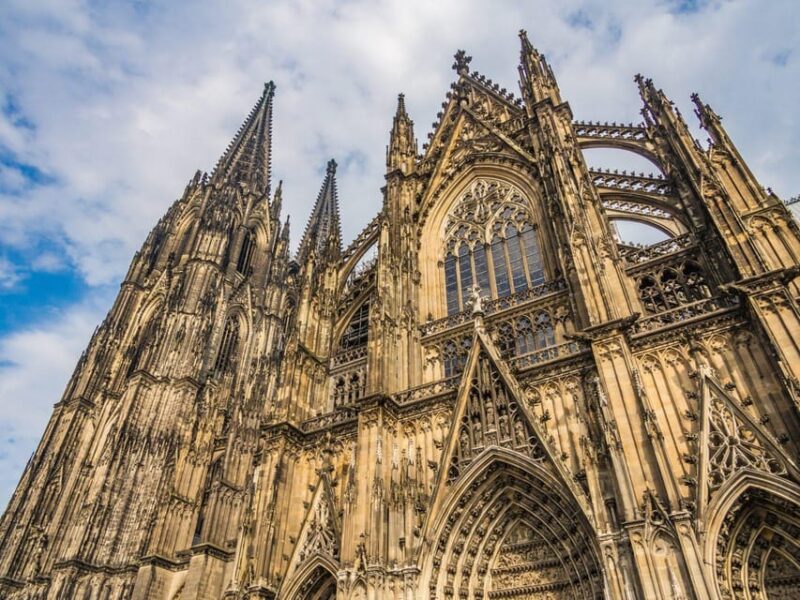
- This 3-hour private walking tour explores Cologne’s resilience and hope during the 1933-1945 period, focusing on significant historical sites.
- Visitors can learn about the city’s revitalization efforts, the fate of the Jewish community, and the stories of oppression and suffering under Nazi rule.
- The tour highlights the Cologne Cathedral as a beacon of unity and the Hohenzollern Bridge as a symbol of overcoming adversity.
- Participants will gain insights into the daily life impacts of Nazi policies on Cologne’s citizens and the complex dynamics of the historical period.
- The tour aims to connect visitors with Cologne’s transformative past, fostering reflection on the importance of resilience, unity, and human rights.
Tour Overview
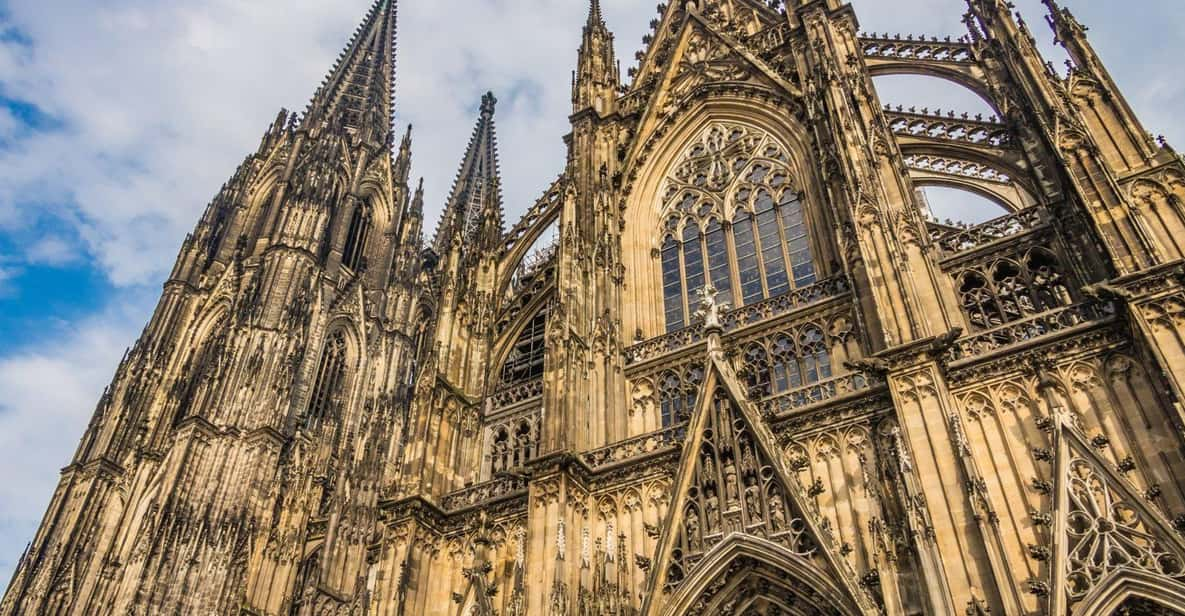
This 3-hour private group walking tour, titled "Resilient Cologne: A 1933-1945 Historical Walk," allows visitors to explore Cologne’s resilience and hope during the turbulent wartime period.
Priced at €69 for up to 4 participants, the tour is available in English and German. Guests can expect a flexible booking experience, with free cancellation up to 24 hours in advance.
The itinerary covers significant sites like the Cologne Cathedral, Alter Markt, Roonstraße Synagogue, EL-DE House, and Hohenzollern Bridge, providing insights into the daily life impacts of Nazi policies on citizens and the community’s unity in the face of adversity.
You can also read our reviews of more walking tours in Cologne
Itinerary Highlights
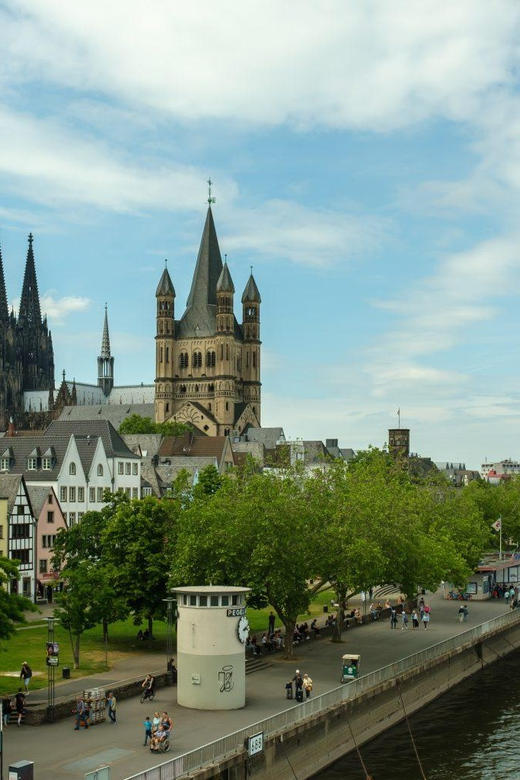
Starting from the Cologne Cathedral, the tour explores the Heinzelmännchenbrunnen, a charming fountain featuring playful gnome-like figures.
The group then visits the Alter Markt, the old market square, to learn about the city’s revitalization efforts and the impacts of Nazi policies.
Next, the tour heads to the Roonstraße Synagogue, a somber reminder of the Jewish community’s fate during Kristallnacht.
After, participants explore the dark history of the EL-DE House, the former Gestapo headquarters, for an in-depth exploration.
The tour concludes at the iconic Hohenzollern Bridge, a symbol of unity and a place for reflection on the past.
Tour Focus

The tour’s focus is to explore the resilience and hope of Cologne during the tumultuous wartime period from 1933 to 1945.
Participants will reflect on the unity and lessons learned from these historical events. They’ll also gain insights into how Nazi policies impacted the daily lives of Cologne’s citizens.
Key locations, such as the Cologne Cathedral, Old Market, Roonstraße Synagogue, EL-DE House, and Hohenzollern Bridge, provide a window into the city’s complex history.
The tour aims to connect visitors with Cologne’s transformative past, fostering a deeper understanding of the resilience and experiences of its inhabitants during dark times.
Significant Locations

Cologne Cathedral, a towering Gothic masterpiece, stands as a symbol of the city’s resilience and hope. The old market, Alter Markt, offers insights into the city’s revitalization efforts and the impacts of Nazi policies on its citizens. The Roonstraße Synagogue serves as a somber reminder of the fate of the Jewish community during Kristallnacht. The EL-DE House, the former Gestapo headquarters, bears witness to the oppression and suffering endured by the people. Lastly, the Hohenzollern Bridge symbolizes unity and provides an opportunity for reflection on the city’s complex past.
| Significant Locations | Key Insights |
|---|---|
| Cologne Cathedral | Symbol of resilience and hope |
| Alter Markt | Insights into revitalization and Nazi impacts |
| Roonstraße Synagogue | Remembrance of Jewish community’s fate |
| EL-DE House | Stories of oppression and suffering |
| Hohenzollern Bridge | Symbol of unity and reflection on the past |
Cologne Cathedral
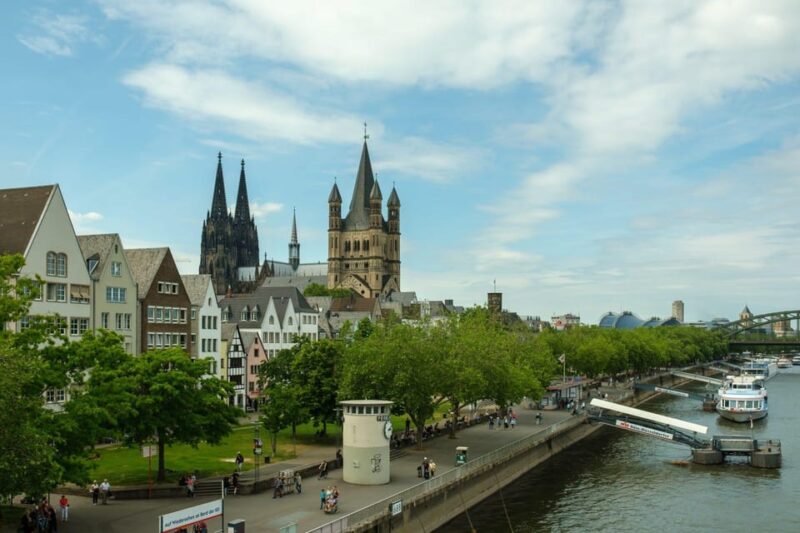
Towering majestically over the city, Cologne Cathedral stands as a lasting symbol of the resilience and hope that have endured through Cologne’s tumultuous history.
As one of the world’s largest Gothic cathedrals, it has weathered the storms of war, serving as a beacon of unity and strength for the people of Cologne.
-
Its intricate architecture, with soaring spires and magnificent stained glass, inspires awe and wonder.
-
Throughout the Nazi occupation, the cathedral remained a place of solace and resistance, its bells ringing out as a defiant reminder of the city’s enduring spirit.
-
Today, the cathedral continues to draw visitors from around the world, a testament to the enduring power of human resilience.
-
As Cologne’s most iconic landmark, the cathedral embodies the city’s ability to overcome even the darkest of times.
You can also read our reviews of more historical tours in Cologne
- Cologne EL-DE Haus and WWII Jewish Holocaust History Tour
- Jewish Quarter History Walking Tour in Cologne’s Old Town
- Cologne: Private Exclusive History Tour With a Local Expert
- Cologne: Old Town Beer History Tour
- Cologne: Old Town Historical Walking Tour With GEO Epoche
- Cologne: Search for Historical Traces of the Romans
Old Market
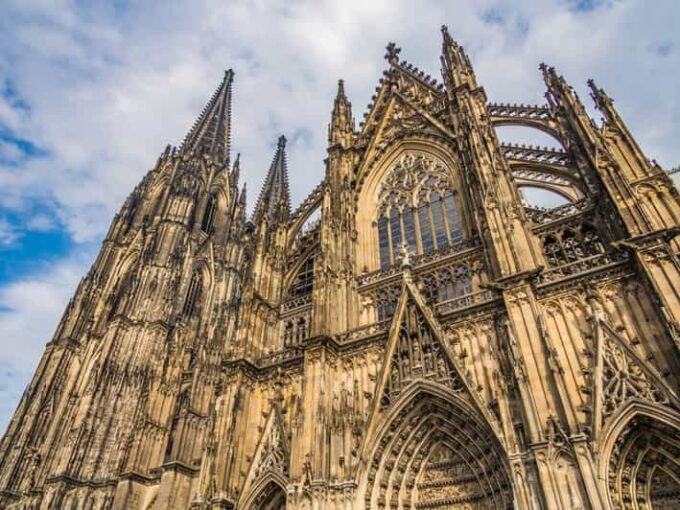
Departing the towering cathedral, the tour ventures to the lively Alter Markt, or Old Market.
Here, participants gain insights into Cologne’s revitalization efforts during the tumultuous Nazi era. The market square, once a bustling hub of commerce and community, bears witness to the impacts of wartime policies on the city’s daily life.
Visitors learn how the Nazis sought to reshape the Old Market, altering its character and restricting the activities of local merchants. Through this exploration, the tour highlights the resilience of Cologne’s citizens, who found ways to adapt and persevere despite the challenges they faced.
This stop offers a window into the complex dynamics that unfolded in the city during the 1933-1945 period.
Roonstraße Synagogue

From the bustling Old Market, the tour proceeds to the Roonstraße Synagogue, a solemn reminder of the fate that befell Cologne’s Jewish community during the Nazi regime.
This once-grand house of worship, reduced to ruins during Kristallnacht, stands as a haunting testament to the tragedy and persecution endured by the city’s Jewish citizens.
-
The silence that pervades the site is palpable, a stillness that echoes the loss and devastation inflicted upon this vibrant community.
-
Visitors are left to contemplate the senseless cruelty that tore apart the fabric of Cologne’s diversity and multicultural heritage.
-
The Roonstraße Synagogue serves as a somber reminder of the fragility of human rights and the importance of vigilance against intolerance.
-
Amidst the ruins, the tour guides visitors through the complex and painful history, inviting reflection on the lessons that must be learned.
EL-DE House and Hohenzollern Bridge
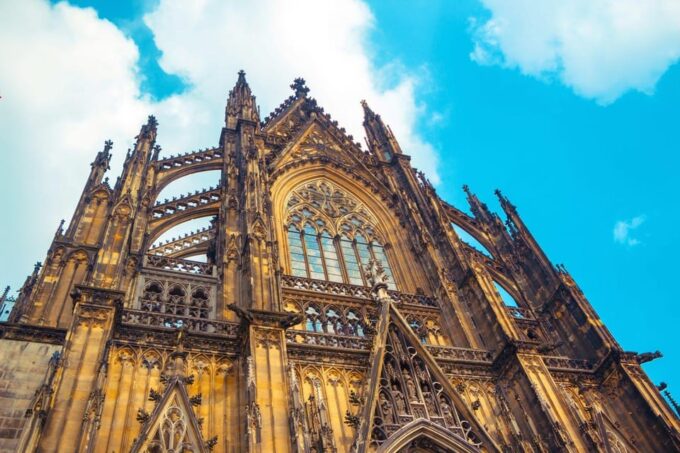
The tour next leads visitors to the ominous EL-DE House, a complex with a dark history as the former headquarters of the Gestapo during the Nazi occupation.
Visitors can explore the exhibition and learn about the stories of oppression and suffering endured by Cologne’s citizens under the Nazis’ rule.
The tour then moves to the iconic Hohenzollern Bridge, a symbol of unity and resilience.
Visitors can reflect on the bridge’s significant role during the war, when it was destroyed and rebuilt as a testament to the city’s determination to overcome adversity.
The tour provides a powerful opportunity to connect with Cologne’s complex history and its inhabitants’ experiences during these turbulent times.
Frequently Asked Questions
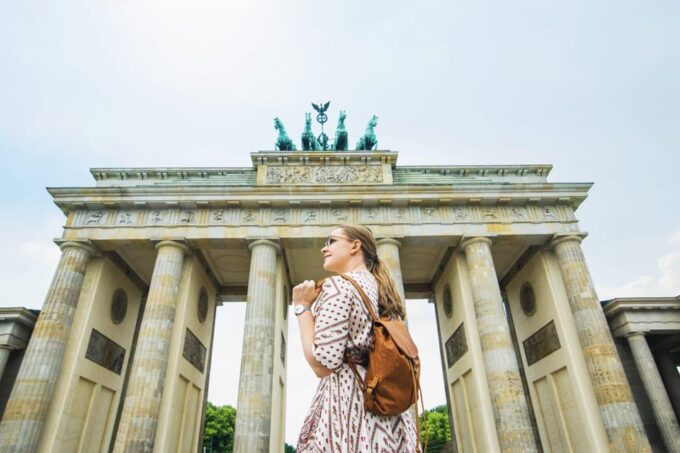
Is This Tour Suitable for Children?
While the tour covers sensitive historical topics, it may not be suitable for young children. The content’s depth and focus on the Nazi era’s impacts could be emotionally challenging for some. Parents should consider their child’s maturity level before booking this tour.
What Are the Accessibility Options for People With Disabilities?
The tour offers limited accessibility options. Guests with mobility challenges can generally participate, but access to some sites may be difficult. Accommodations should be discussed with the tour operator in advance to ensure the best experience.
Are There Any Breaks or Refreshment Stops During the Tour?
The tour does not include any scheduled breaks or refreshment stops. However, participants are welcome to pause as needed throughout the 3-hour experience. Visitors can find cafes and shops along the route to purchase snacks or drinks during the self-guided portions.
Can We Customize the Tour to Focus on Specific Interests?
The tour can be customized to focus on specific interests. The guide can tailor the itinerary and provide more in-depth information on areas of particular interest to the group. Flexibility allows for a personalized historical exploration.
How Do I Get to the Starting Point of the Tour?
To get to the starting point of the tour at Cologne Cathedral, visitors can take public transportation like the metro or bus, or walk if they’re already in the city center. The cathedral is a well-known landmark that’s easy to locate.
Recap
The "Resilient Cologne" tour provides a poignant and powerful exploration of Cologne’s history during the Nazi regime. By guiding visitors through significant sites, the tour emphasizes the city’s resilience and the importance of reflecting on the lessons learned from this complex legacy. Ultimately, the tour encourages a deeper understanding of Cologne’s history and its enduring spirit in the face of oppression.
You can check availability for your dates here:More Historical Tours in Cologne
- Cologne: WWII History & EL-DE Haus Private Guided Tour
- Cologne EL-DE Haus and WWII Jewish Holocaust History Tour
- Jewish Quarter History Walking Tour in Cologne’s Old Town
- Guided Tour of the Historic Center of Colonia
- Cologne: Old Town Beer History Tour
- Jewish Heritage Private Walking Tour & Visit ELDE Museum
More Walking Tours in Cologne
- Cologne Private Walking Tour With A Professional Guide
- Cologne: City Walk with Audio Guide in 7 Languages on your Phone
- Self Guided Walking Tour of Cologne: City and Cathedral
- Exciting Murder Mystery – Interactive city walk in Cologne
- Aachen A Private Walking Tour of the Old Town with Local Guide
- Cologne Cathedral Walking Tour around the cathedral with VR
More Tour Reviews in Cologne
Not for you? Here's more nearby things to do in Cologne we have reviewed
- Private German Beer Tasting Tour in Cologne Old Town
- Cologne Private Walking Tour With A Professional Guide
- Private-Group Bike Tour of Cologne with Guide
- Private photo tour in Cologne
- Explore Aachen in 60 minutes with a Local
- Cologne CGN Airpot to Köln | Bonn | Dusseldorf Private Transfer
- Cologne: City Walk with Audio Guide in 7 Languages on your Phone
- Aachen Cathedral tour with audioguide on mobile app
- Private photo tour to the most beautiful photo spots in Cologne
- Self Guided Walking Tour of Cologne: City and Cathedral
- Aachen Christmas Market Tour With A Professional Guide
- Day tour Aachen & Cologne from Brussels
